Your Guide to Senior Fire Safety
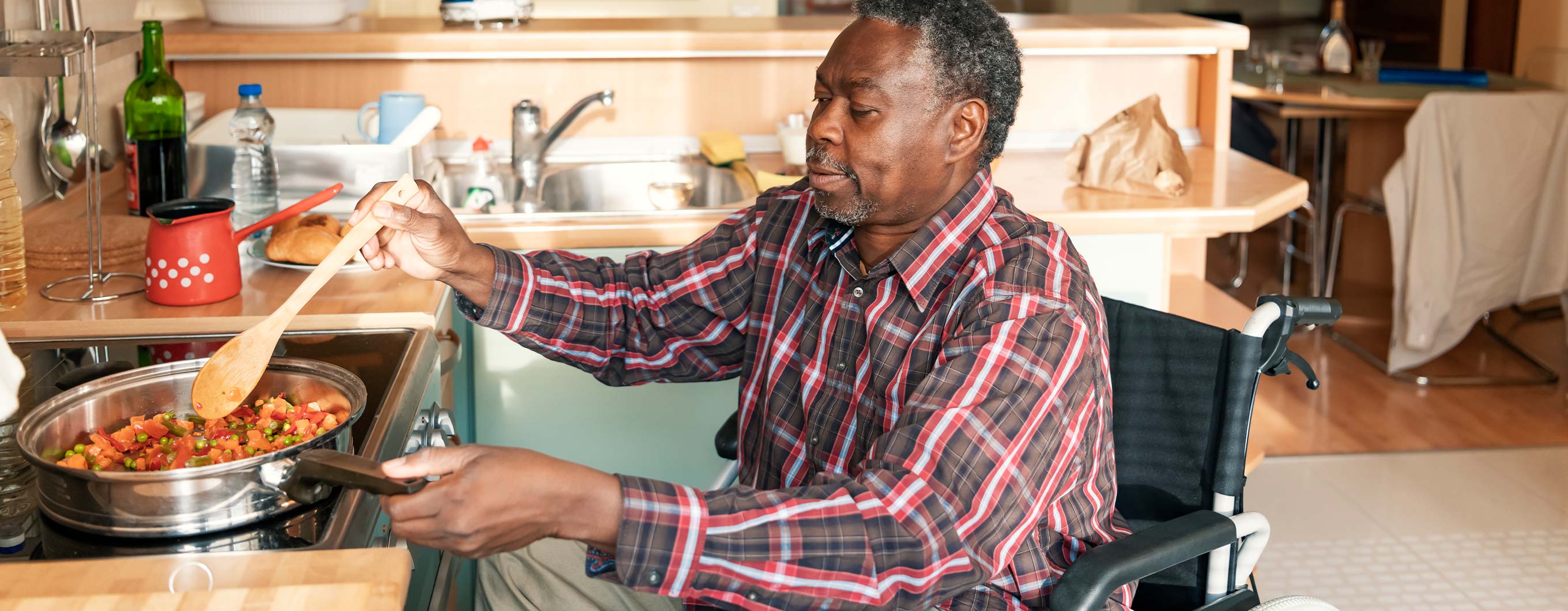
House fires can come as a shock. One minute you may be loading the laundry machine or preparing dinner, and then in the next split-second, you notice your kitchen or laundry room has been set ablaze.
Getting the fire smothered or getting out of the house as quickly as possible will be essential if a fire starts, but in the few seconds after discovering the fire, you may be unsure of what to do. Having a secure plan in place can help turn that initial shock into action. This is especially true for seniors who are aging in place since they are a more vulnerable population and more susceptible to house fire damage and risk.
While things like fire insurance can help after the fire is out, our guide will help turn the panic of a house fire into a plan of action. Read on for things you’ll need to know about how to fireproof your home and what to do if one does occur.
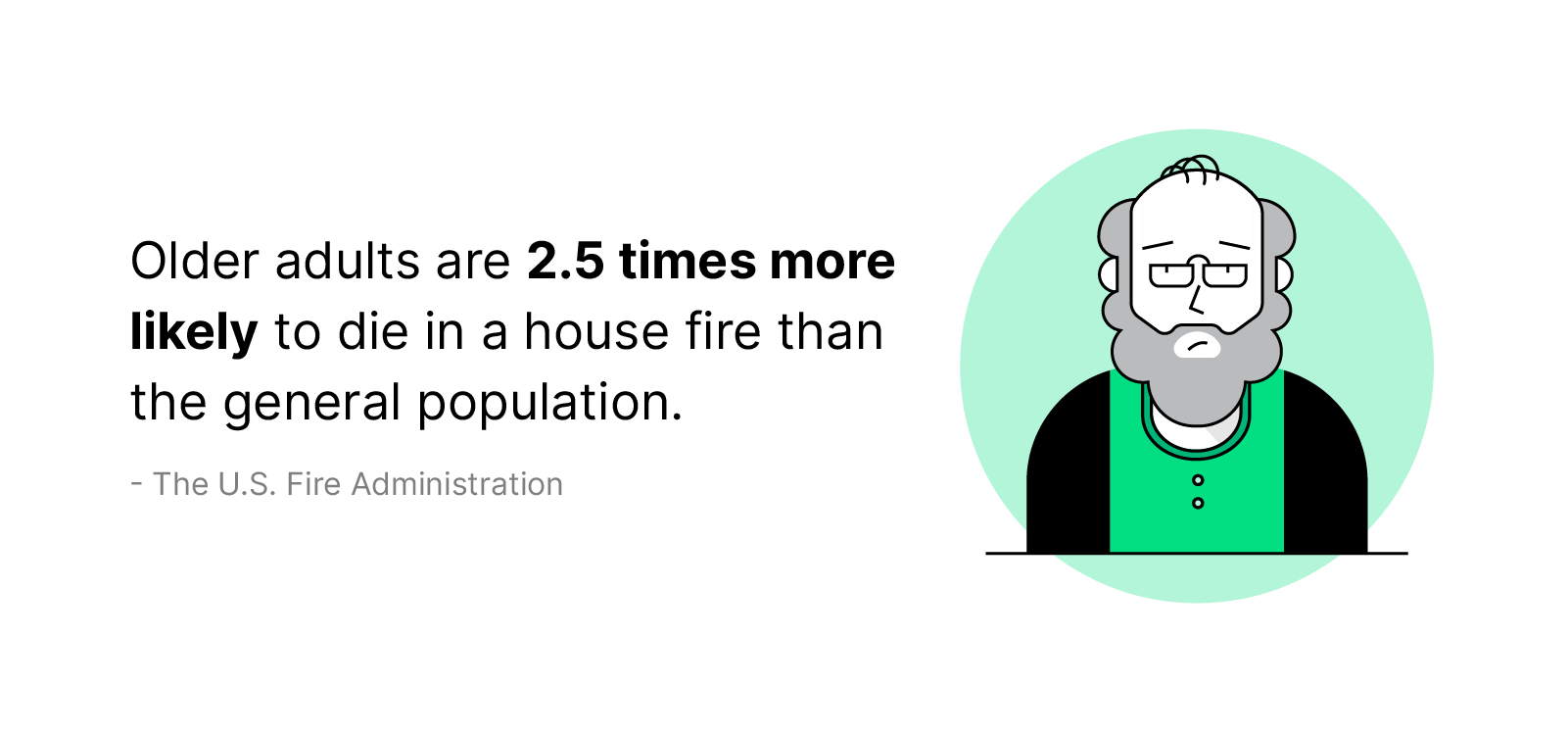
Seniors and fire safety statistics
House fires can be particularly fatal for older adults. We’ve compiled some key statistics from the U.S. Fire Administration (USFA) and the National Fire Protection Association (NFPA) that can help you learn more about the risk.
- Older adults are 2.5 times more likely to die in a house fire than the general population.
- Smoking was the biggest cause of fatal fires for people ages 65-84.
- Most people 65 and older who are killed by fires are sleeping at the time.
- The older population is growing: Currently, those 65 and older make up about 12% of the population of the U.S. and Canada.
Home fires overview
What do a pan of sautéing vegetables, a cigarette burning itself out in an ashtray and a space heater next to a pile of books have in common? They’re all in-home fire dangers and contribute to staggering house fire statistics.
The NFPA estimates that a U.S. fire department responds to a fire call every 21 seconds, and house fires ignite in the United States every 93 seconds. While the good news is that cooking fires — the most common catalyst for home fires — are usually smaller, contained fires, it’s still important to be prepared in the event one sparks in your home.
Being safe, smart and prepared can help you escape a house fire while reducing the damage to your family and belongings. Given that house fires cause an estimated $7.3 billion in damage per year between 2016 and 2020, it’s a good idea to try to reduce the amount by learning what causes fires and what to do when one starts to burn.
Electrical fires
Electrical fires are caused by faulty wiring, worn-out appliances, misuse of electrical outlets and old breaker boxes. From 2015 to 2019, U.S. fire departments responded to about 46,000 of these types of fires per year. Half of the reported electrical fires were started by electrical distribution, lighting and power transfer equipment.
It’s important to note that electrical fires should never be doused with water, as this will further ignite the flames. Instead, smother the flames with a heavy blanket, a fire extinguisher or baking soda.
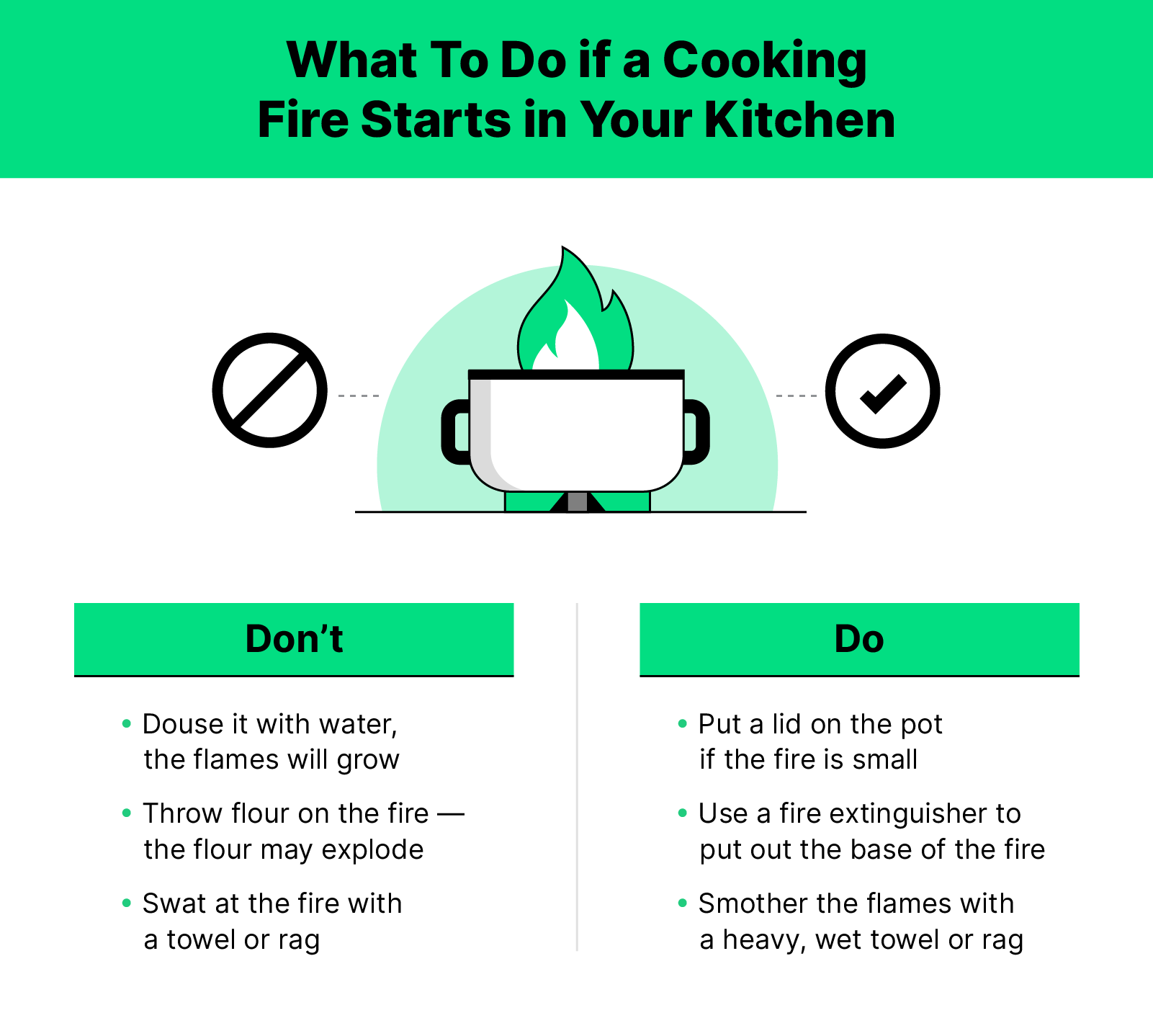
Kitchen fires
Cooking-related fires account for roughly half of all reported home fires. Unattended cooking, such as leaving a dish simmering on the stovetop or baking something in the oven while you’re in another room, is the top cause of these kitchen fires.
The NFPA recommends smart kitchen practices such as regularly checking on cooking food and keeping oven mitts and towels away from an ignited stovetop to prevent cooking fires.
If a kitchen fire does start, first try to smother the flames with a lid or cookie sheet. If the fire is small and contained, smothering the flames will usually cause them to burn out on their own. It’s also recommended to unplug the appliance that has caught on fire, if possible.
Heater fires
Heating equipment is one of the top causes of house fires. From 2016 to 2020, U.S. fire departments responded to about 44,000 heating equipment-related home structure fires per year according to the NFPA.
The NFPA also found in that same report that 88% of home heating fire detahs involved portable or stationary space heaters. Though these devices come in handy during winter months — especially for seniors, who may get cold easily — it’s important to be careful when using them.
If a heater fire does occur in your home, don’t use water to put it out. Grab a heavy blanket, baking soda or fire extinguisher to try to control the flames.
Smoking-related fires
Cigarettes have been a catalyst for home fires for decades. Since 15% of adults ages 45-64 and 8% of adults age 65 and older are smokers, seniors should be prepared for the risks of smoking indoors when it comes to home fires.
Smoking-related fires usually start when a lit cigarette comes into contact with a flammable surface like a couch or bed. These fires can be prevented by always ensuring cigarettes are completely extinguished before throwing them away and avoiding smoking indoors while inebriated, tired or drowsy from medication. The best way to avoid smoking-related fires is to only smoke outside. Ashtrays should also be put on hard surfaces that aren’t flammable — not on couches or ottomans.
Smoking-related fires can be extinguished with water, fire extinguishers or heavy blankets.
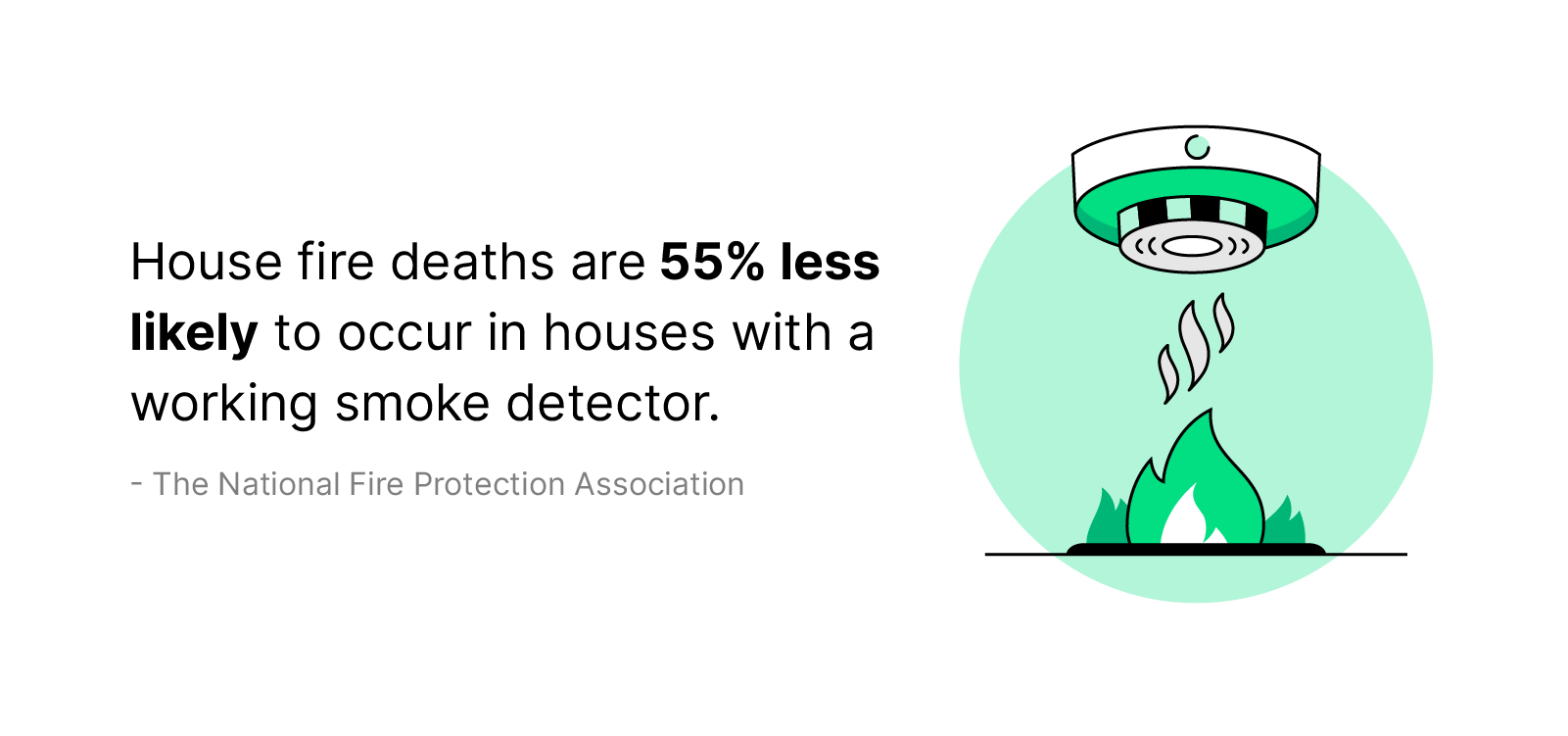
How to keep your home fire-safe
Creating a fire-safe home starts with reducing clutter, purchasing fire-safe appliances and prevention materials, installing smoke detectors and creating an escape route that matches your physical abilities.
For seniors specifically, clutter can inhibit the ability to move around the house while escaping a house fire safely. It can also provide more flammable materials that could catch on fire and help it to spread. To combat this, minimizing clutter throughout the home can help reduce fire risk while making it easier to escape in the event one does happen.
Space heaters may also increase fire risk, especially in the winter months when the usage of these devices is more likely. Some heaters, however, include an automatic feature that turns the device off if it tips over, so it can’t catch the flooring or nearby objects on fire.
A few other ways that you can improve fire safety in your home include:
- Switch to fake, battery-powered candles instead of real ones
- Pay attention to electrical cords, looking for signs of damage or wear
- Clean fireplaces and space heaters after each use
- Install smoke alarms and detectors, and change the batteries on these devices before they lose power
- Keep flammable objects, pets and children away from space heaters and fireplaces
- Make sure all kitchen appliances are turned off after cooking
- Always clean the lint trap before using the dryer
- Keep your home up-to-date with maintenance
Fire safety and medical oxygen
While medical oxygen can be a lifesaver for many older adults, it can also lead to an increased fire risk. By far, the most significant risk for seniors using oxygen is smoking, though any open flame can cause a fire. Open flames around the oxygen supply can ignite, leading to a house fire. Other fire dangers around medical oxygen include stoves or ovens, candles and matches.
The best way to prevent a medical oxygen-induced fire is to keep open flames away from the oxygen supply, and anywhere else increased oxygen levels may be present.
Cooking safely for seniors
Cooking is the number one danger for house fires for the general population, including seniors. Staying safe in the kitchen should be a priority for seniors and their caregivers, and there are several ways to make a kitchen more fire-safe.
First, stay present in the kitchen while cooking. Leaving a pot of boiling veggies on the stove, a roasting turkey in the oven or even a piece of bread toasting in a toaster can become a hazard if it catches fire and no one is there to put it out immediately.
In the event a fire does start in the kitchen, keeping a cookie sheet or pot lid nearby to smother the flames as soon as you spot them can help keep a small fire small. Smothered flames usually burn themselves out if the fire is contained to one pot.
More ways to keep your kitchen fire-safe include:
- Keep towels, oven mitts, paper towels and other flammable items away from the stovetop and oven
- Clean your oven and stovetop after each use to prevent food buildup that can catch fire
- Make sure all appliances are turned off after cooking
- Don’t cook if you are sleepy, drowsy from medication or inebriated
- Set a timer, so you don’t forget about your food
Fire safety equipment
Investing in fire safety equipment is a best practice for anyone. While a younger person’s nose may be able to smell smoke and detect fires, an older nose that has lost a bit of its keen smelling ability may not be able to tell as easily. In this case, a smoke detector and alarm can alert you to the fire before it’s too late. For seniors who are deaf or hard of hearing, smoke alarms vibrate or flashlights to warn about dangers.
Some municipalities even provide free smoke alarms to seniors to help reduce fire risk. To see if your community will provide you with a free smoke alarm, look online for programs in your area.
In addition to saving lives, fire safety equipment can also save you money. Some insurance providers, like Hippo, offer discounts to those who keep themselves and their homes safe by purchasing a fire extinguisher.
Get fire insurance
Being proactive about fire insurance can help you stay confident that you’ll be financially protected in the event of a fire. Fire insurance can help cover the costs of any damages incurred by the blaze to keep you afloat in the aftermath, reducing the amount of stress that may come in those first few days or weeks. Talk to your insurance provider to discuss fire insurance options and how your policy can be tailored to your needs.
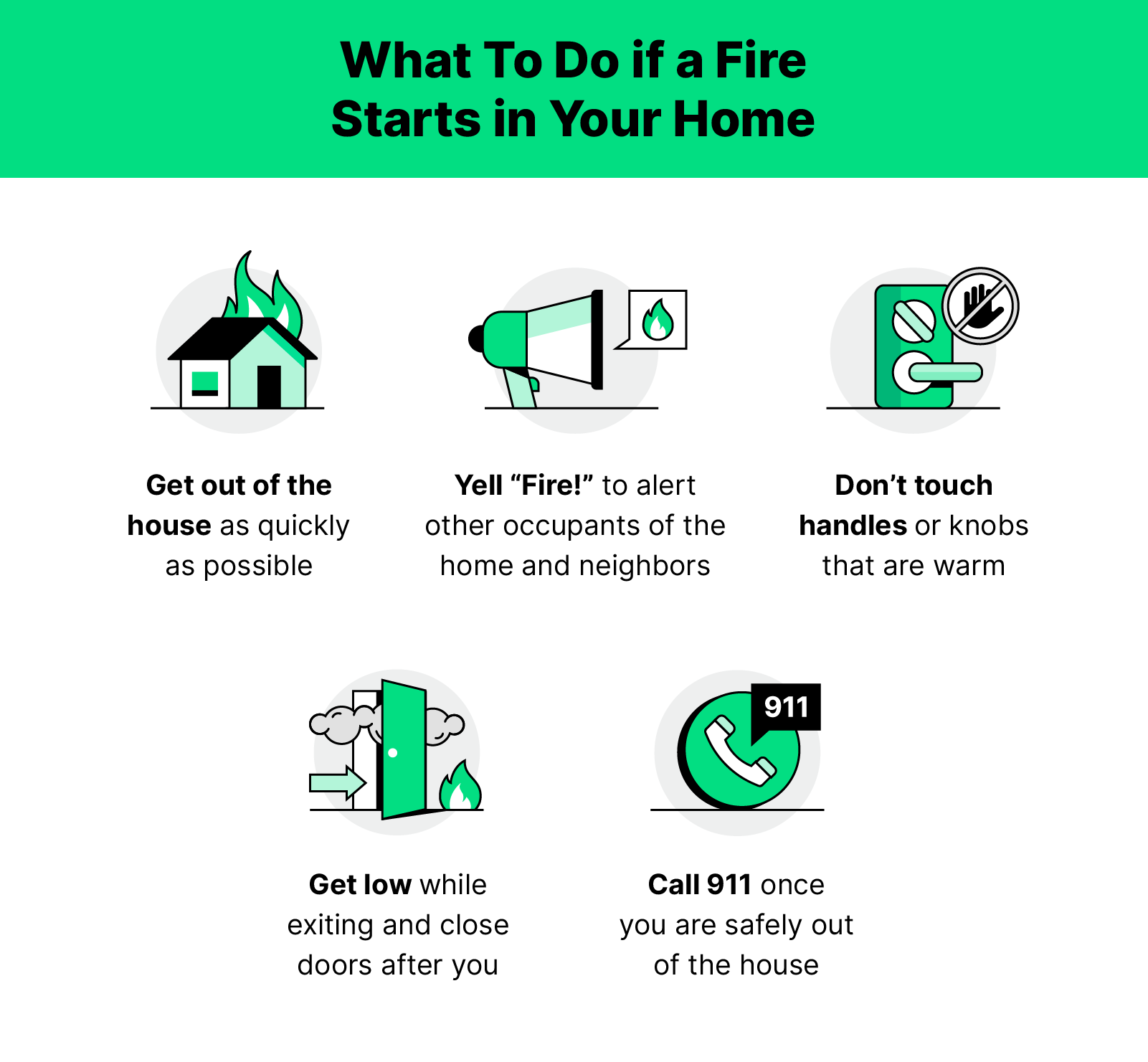
What to do if a fire starts in your home
A house fire can be a devastating event for anyone. Noticing and fighting it early can reduce the risk and increase the likelihood of making it out of the house without any injuries. The NFPA estimates that you have three minutes to escape once a fire starts in your home, so being prepared can make a world of difference.
If a fire can no longer be contained, the first thing you should do is get out of the house. The American Red Cross recommends the following steps once a fire is discovered and begins to spread throughout your home:
- Get out of the house as quickly as possible
- Yell “Fire!” to alert other occupants of the home and neighbors
- Don’t touch handles or knobs that are warm
- Get low while exiting and close doors after you
- Call 911 once you are safely out of the house
How to plan an escape route
Planning an escape route can help ease the panic that comes with discovering a house fire by sending you straight into action. By having a decided set of rules to follow, you can start working on escape without wondering what the right move is.
For seniors, this can also be the difference between getting out and getting trapped. An escape route that is easy to follow and tailored to your physical abilities will ensure you’re able to exit the home safely.
The first step to creating a viable escape route is to get the entire household involved, so everyone who needs to know how to escape will be able to do so. Walk the group through your house and note possible escapes through windows and doors, making sure each exit can be easily opened. Plan a meeting spot for all members of the household, like a nearby landmark, mailbox, street lamp or neighbor’s house.
Once you’ve got an escape plan for each room of your house, write down the plan and make sure everyone is on board. Keep the plan handy, so everyone in the household can reference it as needed.
How to put out a fire on your clothing
If a fire starts on your clothing, remember the old adage: “Stop, drop and roll.” Stop where you are, drop to the floor and roll around with your hands covering your face. The goal in doing this is to smother the flames, so they are extinguished quickly.
Don’t run or flap your arms, as air can fan the flames and cause them to grow. Instead, focus on smothering the flames by performing the stop, drop and roll.
What is a fire safety plan?
Remember the three P’s of fire safety: prevent, plan and practice. Your fire safety plan can encompass all of these things.
Firstly, the plan should include all materials needed to assist during your escape from the home, including where to go and who to call. You can include a map of your home with possible escape routes and a list of emergency numbers. In addition to contact information, you may also want to have a home inventory to account for any damages or losses incurred during the blaze.
You may also want to include fire safety tips and information in your fire safety plan for prevention purposes. These could include recommendations for cooking, cleaning, and general living in a fire-safe way that is easy for seniors to understand.
We’ve created a printable fire safety plan that can help you organize your information, figure out who priority contacts are and remember your escape routes once you’ve got them planned out.
Put your fire escape plan in a folder somewhere that can be easily accessed in the event of a fire and where members of the household can reference it as needed to prepare for a potential fire.
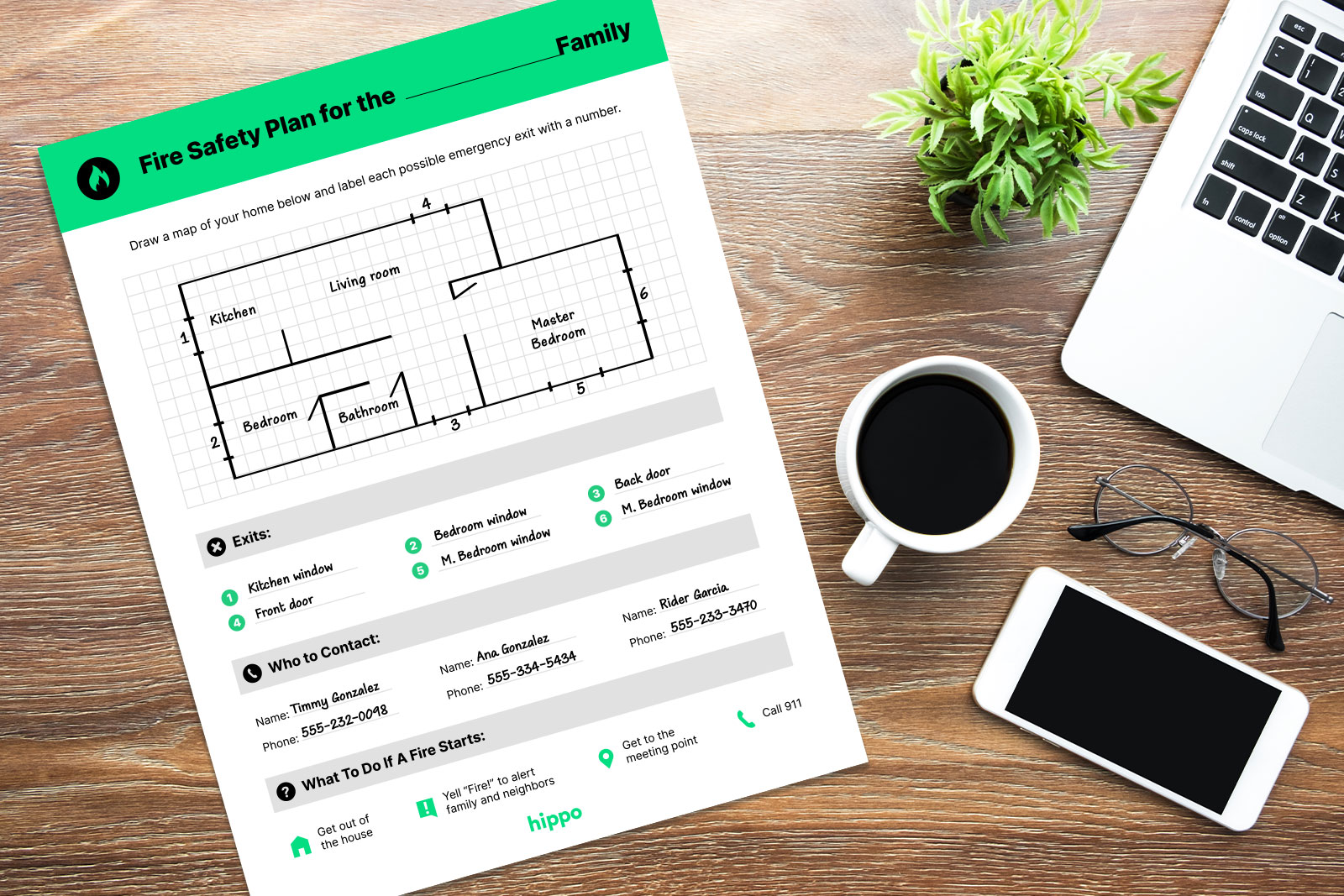
Government materials for fire safety
Government agencies have compiled fire safety resources for families to be better prepared. To learn more about house fires and what you can do to prevent and fight them, visit the following sites.
- Fire Safety Outreach Materials For Older Adults
- Safety Tips For Older Adults
- Fire Safety For Seniors
- Home Fires
- Home Fire Safety
No one wants a house fire to happen to them, but pretending the risk isn’t there doesn’t mean it won’t happen. It’s better to have a plan ready just in case. For many people, that starts with home insurance, so get a quote today to find out how you can keep your family and household safe.
Seniors may not have looked at their home insurance policy in a few years, and it may need an update. You don't want to be underinsured in the event of a home fire — even a small one. Hippo can customize your policy to match you truly need.




